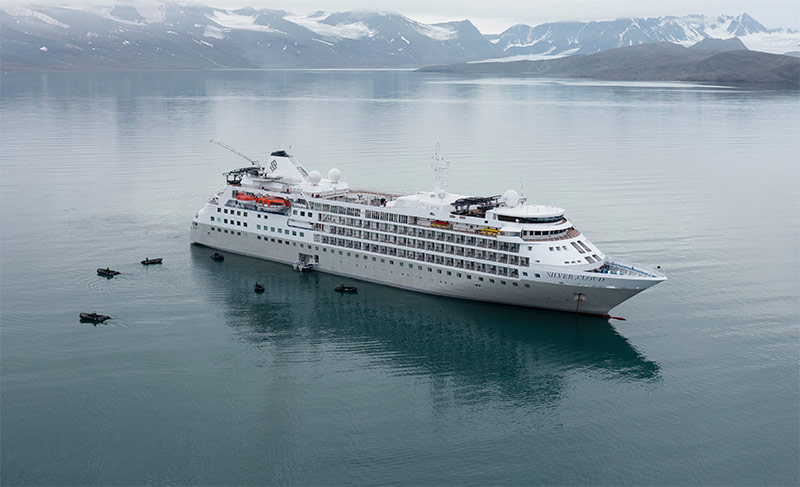The luxury cruise industry has evolved over the past few years with different demographics now cruising, according to Silversea Cruises’ CEO, Barbara Muckermann.
In the 1990s, luxury cruising was defined by uniform standards, with guests expecting a consistent level of service.
“We were looking at hotel standards and deciding how many seconds the waiter needed to spend before serving coffee. That was luxury: having the exact same luxury experience anywhere in the world,” she explained.
Muckermann added that the boomers have now taken the place of the silent generation, causing the industry to change its standards.
[For a complete overview of the luxury cruise market, see the 2023 Luxury Market Report by Cruise Industry News.]
“They want to try food, understand culture, and really immerse themselves in the destination,” she said, noting that luxury now may mean “drinking a cheap rosé with locals in Portugal.”
Booking curves have also seen changes in the past few years, Muckermann said.
“Luxury used to be the kind of trip you booked two to three years in advance. Our revenue managers were super happy because this was the most predictable guest on the planet.”
However, the pandemic changed passenger behavior.
Guests are now booking with much less notice, with some even showing up at a port to try to acquire a cabin for a cruise departing on the same day.
“We realize that there’s a really strong pent-up demand, but it’s absolutely impossible to understand what’s going on with behaviors,” she said.
According to Muckermann, the polar regions are currently the most sought-after destinations among Silversea Cruises’ guests.
After acquiring a new ice-strengthened ship, the Silver Endeavour, in 2022, the brand is set to operate three vessels in the Arctic and Antarctica over the next seasons.
“In the whole history of humanity, less than one million people have been to Antarctica. It is a really small, new, and amazing destination,” she said.
Muckermann compared the current role of the expedition ships to the one performed by the world’s first jets in the 1950s, which opened new destinations to the general public.
“Thanks to luxury expeditions, you have these ships that bring the comfort of a city hotel and much more to these incredible remote places in the world,” she said, noting that luxury is also contextual. Having a glass of champagne in the United States is not necessarily a luxury experience, Muckermann added, but doing it in Antarctica, “in the middle of incredible nature and watching penguins jump,” certainly is.
“That’s why I think polar regions are not only the new thing but also here to stay because they were the ultimate frontier,” she said.
While customers may not be aware of the different products offered by specific luxury cruise lines, the new brands joining the industry can help the business, Muckermann said. With cruising being a small part of the world’s luxury travel industry, the new players help open the category to new customers.
“The opportunity is not competing among each other or killing travel advisor partners. It’s about explaining to the world that we have the opportunity of discovering 70 percent of our planet on these beautiful hotels that are moving around the seas.”
As “safaris at sea,” Muckermann added, cruises can compete with luxury tour operators while offering much more than a resort on a beach, for instance.
“We’ll give you the beach but also culture, authentic food, and diverse attractions,” she said.
[For a complete overview of the luxury cruise market, see the 2023 Luxury Market Report by Cruise Industry News.]




